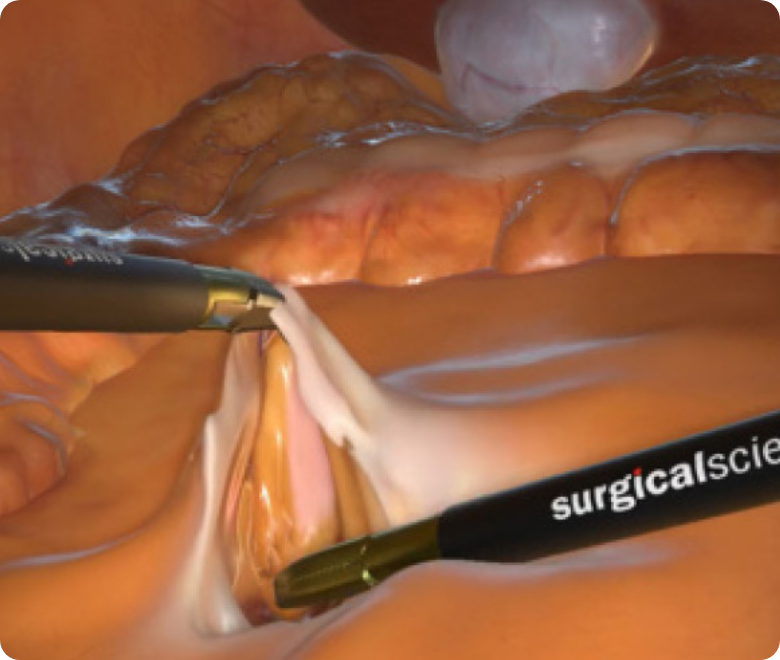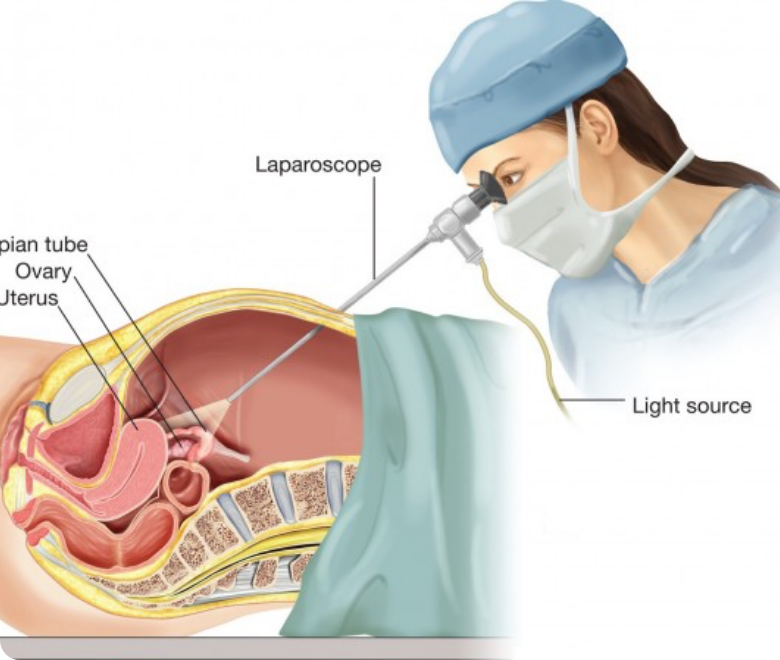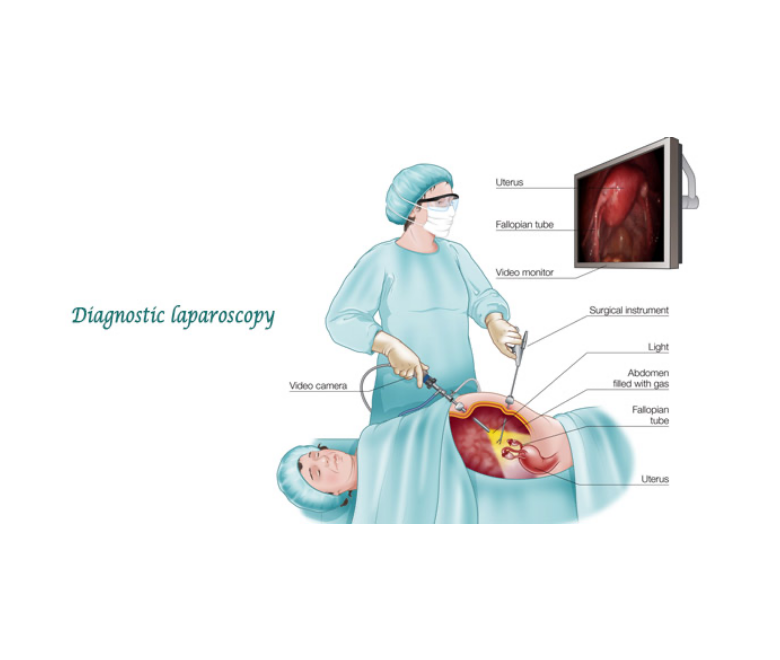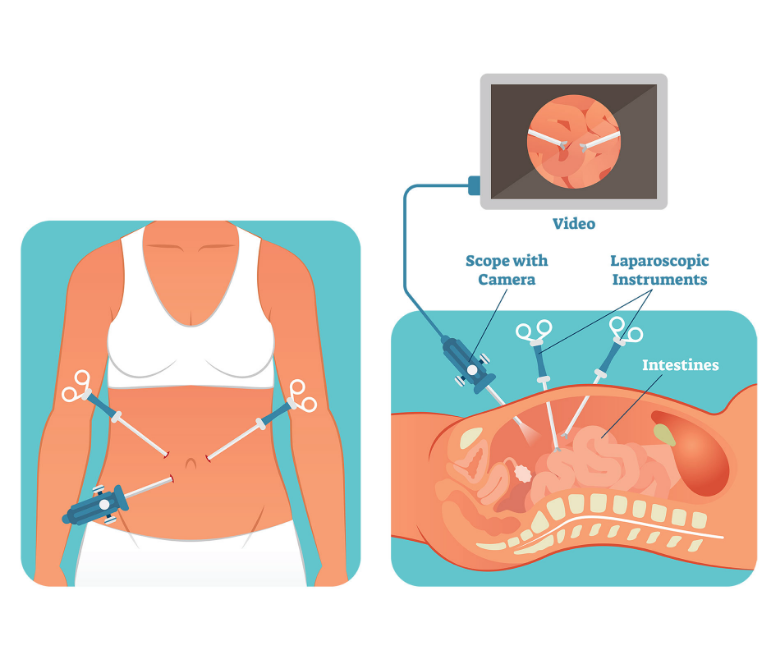


Minimally invasive surgical operation (MIS), additionally recognised as videolaparoscopic or simply laparoscopic surgery, is a surgical philosophy that calls for performing the most superior operations via the least invasive incisions, that it grew to become feasible to operate superior operations thru tiny port holes alternatively of via giant incisions.
Videolaparoscopy (also known as keyhole or Band-Aid surgery) is a surgical method in which surgical procedure is carried out the usage of extraordinary video cameras and mild sources which are connected to the stop of a long, skinny (3-11mm thick) telescope-like tube known as a laparoscope (also endoscope). To enhance visualization and get entry to to the organs, videolaparoscopy additionally requires that the belly cavity (belly) be inflated (distended) with carbon dioxide fuel (CO2). This distention lets in the laparoscope to be safely inserted via the stomach button and into the belly cavity. One to three extra 5-10mm incisions are additionally made in the decrease stomach for inserting auxiliary instruments.
These gadgets are in actuality extensions of the surgeon’s hands, permitting him or her to use them from backyard of the physique to function surgical procedure internal the stomach cavity. Instead of searching down at the patient, the physician is now capable to watch the TV display and function superior laparoscopic surgical procedures off the screen with exceptional magnified visualization, whilst assuming a comfy standing posture and with the least trauma to patients. The surgical group can additionally observe the whole surgical operation via gazing the TV video display units as well. Today laparoscopic surgical operation has many applications, which includes the remedy of ovarian cysts, tubal reversal, endometriosis, infertility, administration of fibroids, and hysterectomy. It additionally has an growing position in gynecologic oncology.
Prior to the introduction of videolaparoscopy, all surgical procedures had been carried out the use of very massive incisions. These massive incisions have been extensively greater painful for patients, requiring quite a few weeks of recovering, frequently involving quite a few days of sedation with morphine and entire immobility in the hospital. Compared to minimally invasive surgery, massive incision surgical procedures (laparotomy, thoracotomy, etc) are additionally related with a higher danger of serious injury, infection, wound dehiscence, long-term disability, and greater incidences of mortality.
Because videolaparoscopy led to such a vast discount in these destructive outcomes, it has revolutionized present day surgical treatment in each and every self-discipline and is now diagnosed as one of the most vital surgical improvements of the twentieth century.
Contact Us
Diagnostic laparoscopy is a procedure that allows a doctor to look directly at the contents of the abdomen or pelvis.
The procedure is usually done in the hospital or outpatient surgical center under general anesthesia (while you are asleep and pain-free). The procedure is performed in the following way:
The medical professional makes a small cut (incision) under the stomach button.
A needle or hollow tube known as a trocar is inserted into the incision. Carbon dioxide gas is passed into the abdomen through the needle or tube. The gas helps expand the area, giving the healthcare provider more room to work, and helps the healthcare professional see the organs more clearly.
A tiny video camera (laparoscope) is then positioned through the trocar and is used to see the interior of your pelvis and abdomen. More small cuts may also be made if other tools are needed to get a better view of certain organs.
If you are having gynecologic laparoscopy, dye may also be injected into your cervix so the healthcare professional can view the fallopian tubes.
After the exam, the gas, laparoscope, and tools are removed, and the cuts are closed. You will have bandages over these areas.

Laparoscopy in pediatric trauma is a safe method for the evaluation and treatment of selective blunt and penetrating abdominal injuries in hemodynamically stable patients. Laparoscopy serves as a diagnostic tool in abdominal trauma, which reduces the morbidity of a negative laparotomy. Instead of open laparotomy, laparoscopy can be used safely and effectively for the diagnosis and treatment of traumatic abdominal injuries.

Many frequent surgical procedures can be carried out laparoscopically today. Whether you are a candidate for laparoscopic surgical procedure will rely on how difficult your circumstance is. Some problematic prerequisites may also require open surgical procedure to manage. However, laparoscopic surgical treatment is turning into the favored default approach for a developing listing of frequent operations, due to its cost-saving advantages and extended affected person outcomes. The listing includes: Cyst, fibroid, stone, and polyp removals. Small tumor removals. Biopsies. Tubal ligation and reversal. Ectopic being pregnant removal. Endometriosis surgery. Urethral and vaginal reconstruction surgery. Orchiopexy (testicle correction surgery). Rectopexy (rectal prolapse repair). Hernia restore surgery. Esophageal anti-reflux surgical procedure (fundoplication). Gastric pass surgery. Cholecystectomy (gallbladder removal) for gallstones. Appendectomy (appendix removal) for appendicitis. Colectomy (bowel resection surgery). Abdominoperineal resection (rectum removal). Cystectomy (bladder removal). Prostatectomy (prostrate removal). Adrenalectomy (adrenal gland removal). Nephrectomy (kidney removal). Splenectomy (spleen removal). Radical nephroureterectomy (for transitional mobile cancer). Whipple system (pancreaticoduodenectomy) for pancreatic cancer. Gastrectomy (stomach removal). Liver resection. The surgical procedure starts with a small incision close to your stomach button or pelvic bone. This first incision is used to pump carbon dioxide fuel into your belly or pelvic cavity. Laparoscopic surgical treatment makes use of slender surgical tubes referred to as trocars as ports for surgical instruments. The medical professional will insert the first trocar and then location the fuel tube via the trocar to inflate your belly or pelvic cavity with gas. This helps separate your belly wall from your organs and makes organs simpler to visualize on the video monitor. After inflating the cavity, the health practitioner will dispose of the gasoline tube and region the laparoscope via the trocar. The laparoscope will venture real-time video pictures of the surgical website online to the video monitor. This will information the placement of the different surgical instruments. Depending on the kind of procedure, they might also make one or a number of extra keyhole incisions and area trocars in them. Laparoscopic surgical treatment makes use of long, slim contraptions that are designed to healthy thru the trocars. For some operations, a surgical drain may additionally be positioned interior the cavity to draw out extra fluids, such as from inflammation. The fluids will drain via a small tube. For some conditions, the tube can also want to continue to be in your physique for some time after the operation to proceed to drain fluids. Everything else will be sewn up after the operation. The gasoline will be let out of your physique earlier than the incisions are closed. Your surgical crew will make certain that your quintessential symptoms are steady earlier than withdrawing your respiratory tube and your IV.